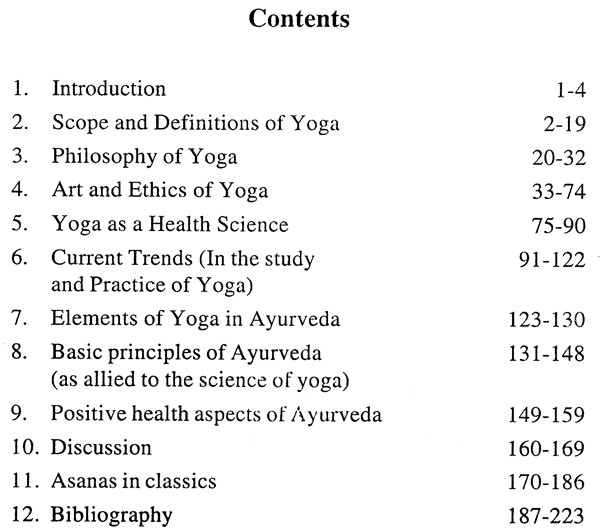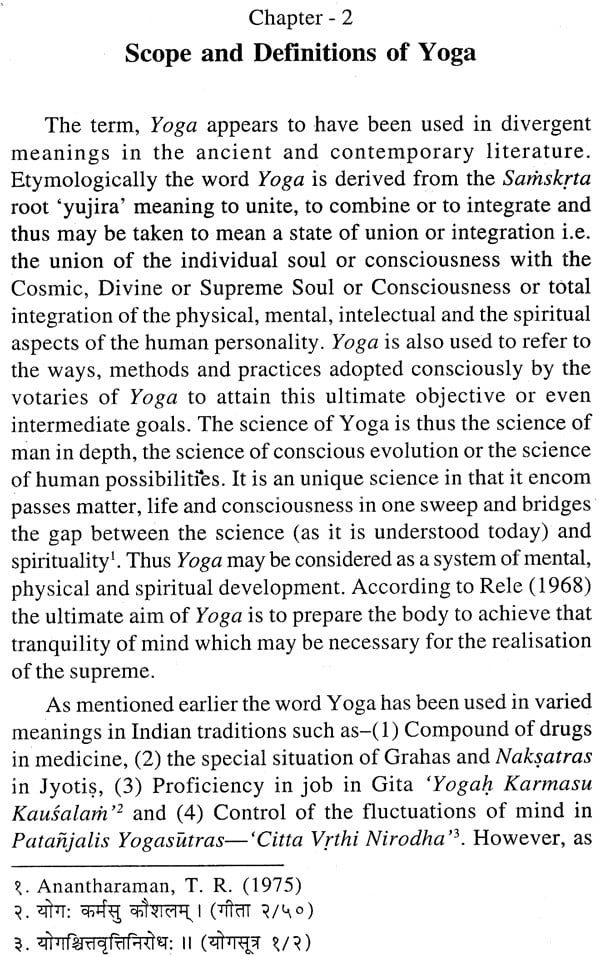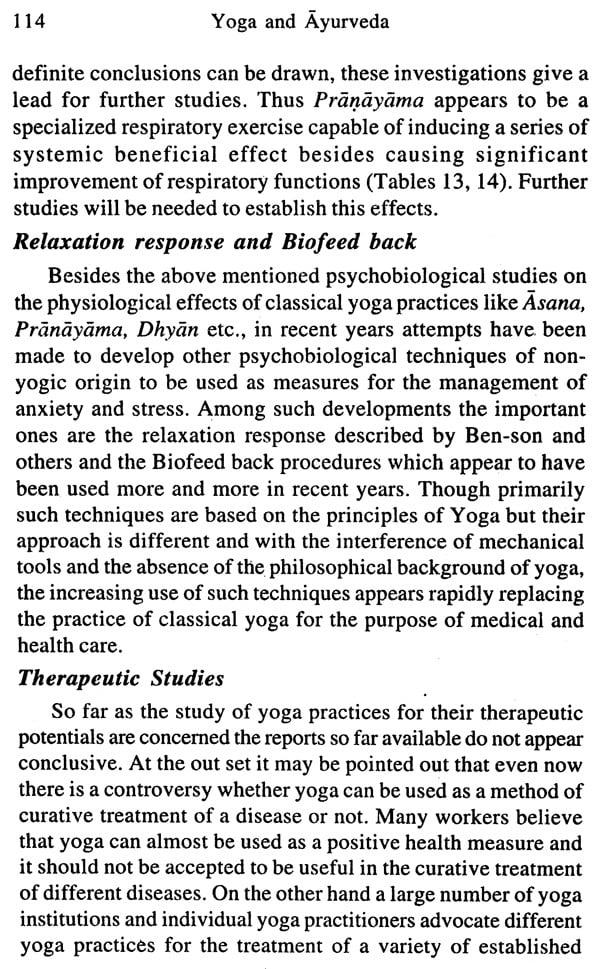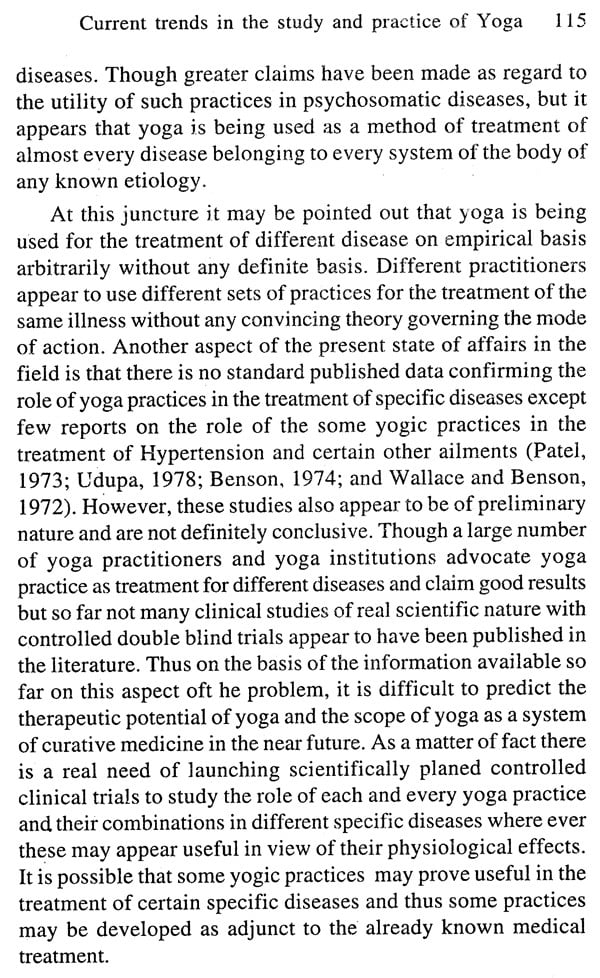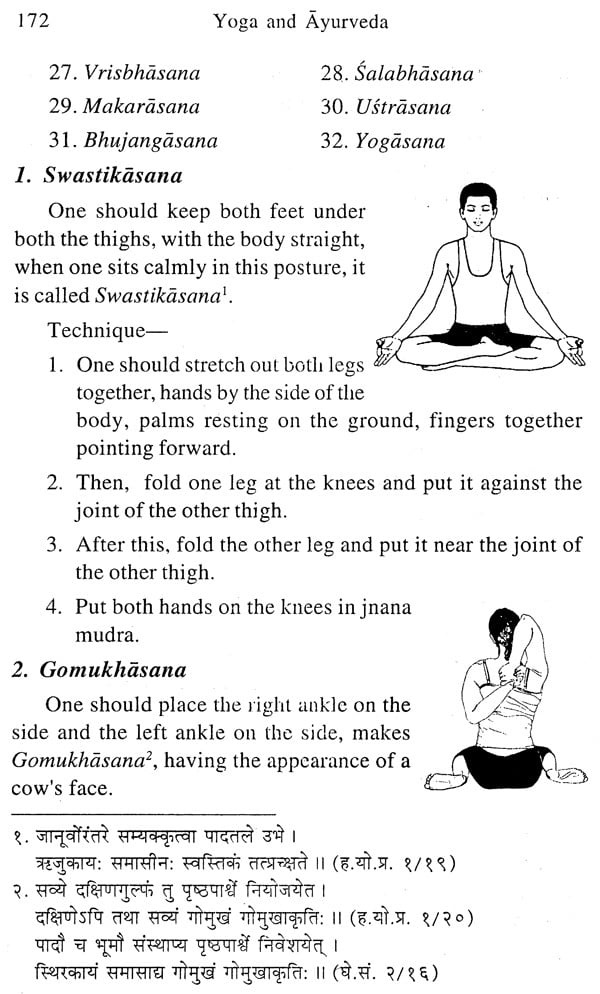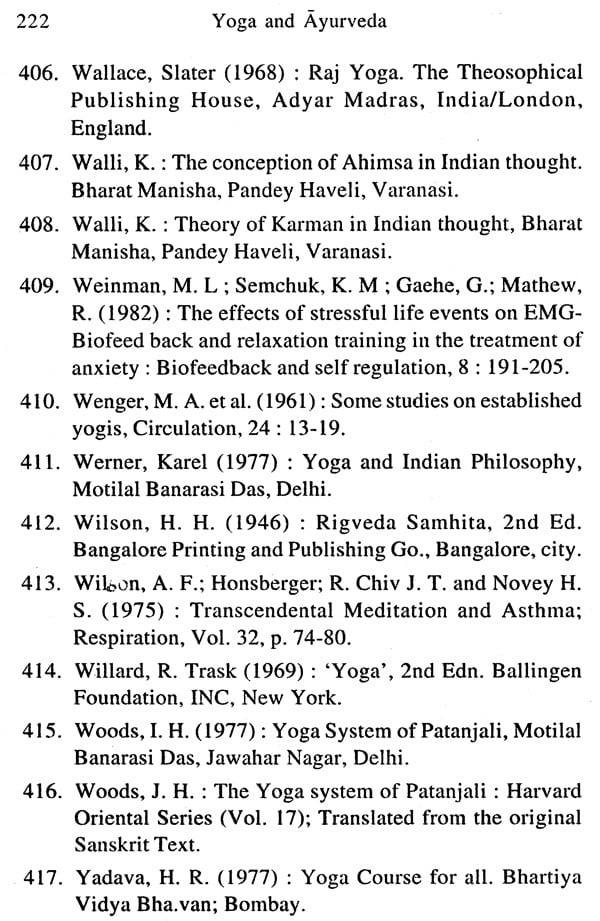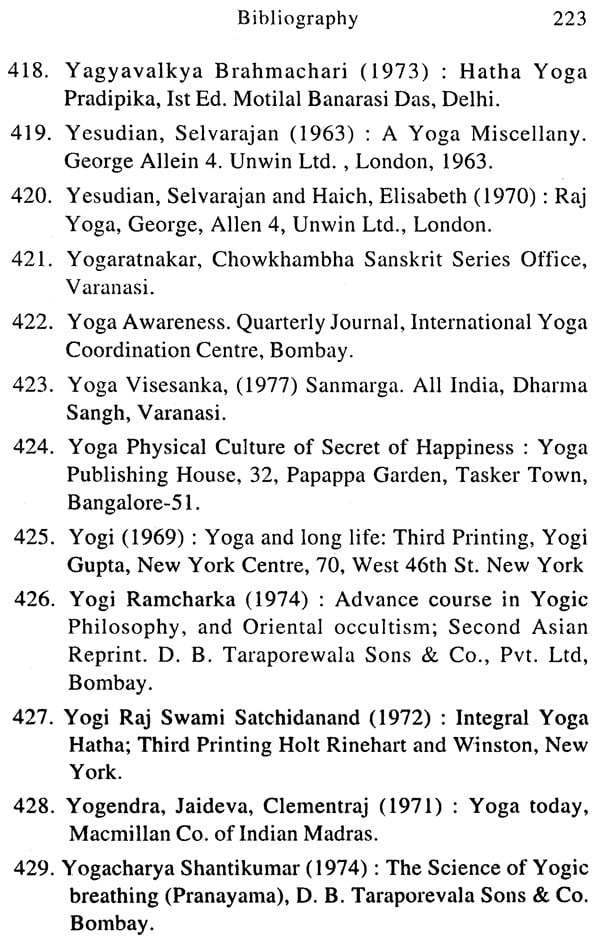
Yoga and Ayurveda: Their Alliedness and Scope as Positive Health Sciences
Book Specification
| Item Code: | NBZ251 |
| Author: | Satyendra Prasad Mishra |
| Publisher: | Chaukhambha Sanskrit Sansthan |
| Language: | ENGLISH |
| Edition: | 2015 |
| ISBN: | 8186937013 |
| Pages: | 224 (20 B/W Illustrations) |
| Cover: | PAPERBACK |
| Other Details | 8.50 X 5.50 inch |
| Weight | 230 gm |
Book Description
This monograph discusses in detail the classical concepts of the science of Yoga, its ideology and practical aspects. It brings out specifically the health and therapeutic potential of yoga and deliberates on future scope of yoga as a health science and therapy. It puts powerful arguments to suggest yoga as a branch of Ayurveda, the ancient science of life. For the purpose of comparison the monograph adds few chapters on the fundamental principles of Ayurveda highlighting the basic and applied similarities and alliedness of the two great oriental sciences, Yoga and Ayurveda.
Yoga and Ayurveda, both deal with the Sada Dhatvatmaka Purusa as described by Caraka in relation to the Brahma; the individual vs the universe of the self vs non-self. It is in this context that Ayurveda propounds two broad streams of Cikitsa viz.-1), Naisthiki Cikitsa, 2) Laukiki Cikitsa. The Naisthiki Cikitsa is the branch of Ayurveda which deals with spiritual aspects of life and helps man in getting absolute freedom from pain and suffering of the world through absolute reality. The Laukiki Cikitsa deals with the gross ill health and its care through drugs, diet, exercise etc. The present day science of yoga essentially falls into the realm of, Naisthiki Cikitsa, although Yoga also contributes a lot in Laukiki Cikitsa.
Although, in practice Yoga and Ayurveda are very much separated, conceptually they are very much allied. One finds elaborate description of the concept of Yoga and yogic state in Ayurvedic texts like Caraka Samhita; though technical details are not seen. It is interesting to see the concept of Satya Buddhi in Caraka Samhita which strikingly simulates the concept of Rtambhara Prajna of Patanjali or Sthitprjna of Bhagvadgita. Caraka also describes in certain details the Astaisvaryas or special attainments, a Yogi may afford to get. Interestingly Susruta Samhita proclaims that such a state adorned by Astaisvaryas can also be achieved by using the divine drugs `Soma’. Besides, there are elaborate descriptions of the ethical practices of Yoga like Yama, Niyama in the context of Sadvrtta and Acara Rasayana in Ayurveda.
On the other hand several Yogic texts including the classic of Patanjali and later writings on Hathayoga describe the problems of health and disease as also their care and cure by use of Asanas, Pranayama, Kriya, Mudra, Bandha etc. They also refer to the Ayurvedic doctorine of Pancamhabhuta and Tridosa or more elaborately the concept of Prana and Nadis. As a matter of fact the basic approach and the fundamentals of both the sciences, Yoga and Ayurveda, are the same, with variance or emphasis one certain aspects.
Both these sciences are equally ancient and are Indian in origin. Certain scholars believe that both these sciences and third one Vyakarana-Mahabhasya were developed by the same seer Patanjali-Yoga, Sastra for purification of Manas or mind; Vyakarana sastra for correction Vani or speech and Ayurveda for preservation of Kaya or body. Thus these three sister sciences were developed simultaneously for the care of mind, body and speech and hence they are allied to each other and they derive extensively from each other. Cakrapani, the principal commentator on Caraka Samhita, quotes this possibility in the very first chapter of his commentary.
Asanas is the most acknowledged part of yoga worldwide rather it is more appropriate to say that asanas became the second name of yoga. It was like 'God given gift' when the author of the book offered me to contribute a chapter on asana and to do some minor corrections in the book for upcoming edition, which I accepted with great gratitude. Author of the book wished to make the upcoming edition more student friendly and consistent to the current trend, so that the reader could find this book more useful and get acquainted to the practical aspects of the yoga.
I am thankful to the author for giving me this opportunity to be a part of this manuscript.
Book's Contents and Sample Pages
